Helminthic infestation in children is one of the most widespread and underestimated the risk of the disease. Worms in children, provokes not only the insufficiency of the intake of nutrients in the body, but also cause allergic reactions, chronic poisoning, low immunity, diseases and injuries of the gastrointestinal tract. Signs of parasitosis develop immediately, for a long period of time, the disease may be asymptomatic or unexpressed clinical picture and determined only in laboratory analysis.
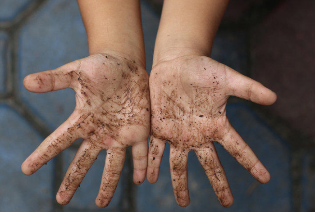
The prevalence and types of worms
It is considered that the helminthiasis, infection with worms is a disease, are more related to people from social backgrounds is below average, living in unsanitary conditions, often, contact with infected pets, or soil. However, according to statistics, only in the European countries, the helminths found in the survey in every third patient.
In nature, there are more than 300 species of helminths, more than 70 species, which are found in Russia, the rest can enter the human body during the trips to exotic countries. Among all the types of worms parasites that can exist in the human body, there are three groups:
- nematodes belonging to the round helminths, some of the most common parasites in children (pinworm, whipworm, Trichinella, roundworm);
- ribbon (flat) worms related cestode (tapeworm, tapeworms and Echinococcus);
- parasites-flukes or trematodes, becoming a cause of opisthorchiasis, fascioliasis, chistosos, paragonimoz etc.
In most cases helminths parasitize and multiply in the intestine, but the eggs and larvae can spread through the bloodstream into various organs of the body. Most often it affects the nearby organs of the gastrointestinal tract: liver, gallbladder, however, the parasites can inhabit muscle tissue, the lungs, brain.
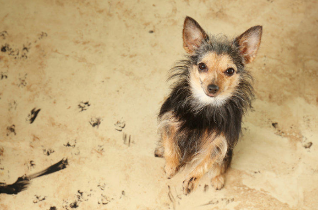
Helminthiasis: the path of the infection
Methods of infection by worms depends on the characteristics of their development cycle. For some groups of helminths of man is the main "owner" in the body of the which they live and reproduce themselves, for others – intermediate. In some cases, the parasites of the necessary maturation of the eggs in the soil or other conditions. But the basic rule of protection against the infection is hygiene, a condition that in childhood is not always.
Childhood is a period in which sustains the immunity has not yet been formed, which significantly increases the probability of Contracting parasitosis. The desire to try all the flavor, multiple contacts with soil, sand, objects that increase the probability of penetration of helminth eggs in the body of the child.
The most common worms – pinworms and roundworm is transferred without washing your hands can remain on items for the home (handyman), to reach the interior of the body with the food (poorly washed fruits, vegetables). There is also the possibility of the spread of the worms through contact with an infected person or animal, or exist in proximity with them.
Pinworms are one of the worms causing reinvasion by itching, which is caused by the female pinworms in the process of laying eggs outside of the anus, causes the patient to touch, RUB, scratch the irritation of the surface, and spread the parasite eggs in the background, bedding, clothes, objects, surfaces. With repeated ingestion of the eggs, remaining in the hands or bed, reinvasion occurs, auto-infection of the patient. Primary infection of children usually takes place in institutions, in playgrounds, in places of a mass congestion of children.
What are the factors that increase the risk of infection with helminths?
- In case of not complying with the hand hygiene: skip washing your hands after returning from the street of the guests of the bathroom, before any food intake.
- Biting nails, sucking fingers, keep in the mouth of various objects (pencils, pens, toys, etc.).
- Animals visiting the street: even with timely anthelmintic treatment of dogs and cats can spread the eggs of the worm, he from the street, in feet, of wool.
- Improper treatment of vegetables, fruits, berries, herbs before serving.
- The low level of hygiene in the home: bring street shoes, untimely washing of floors, etc.
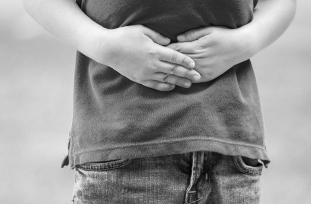
Worms in children: different symptoms and treatment of helminthiasis
Many species of parasites for a long time not contribute to the formation of a clear clinical picture eliminare: the goal of the parasite is to exist so as not to be noticed by the owner of the vehicle. So bright symptoms of helminthiasis can be observed only in those cases in which the infection is a multiple (initially or for a long period latent) and/or the child has reduced immunity, there are diseases concomitant, against which the bot is more pronounced. Individual situation – infestation of exotic species of parasites, causing a strong reaction of the body.
Common signs of helminthiasis in children:
- increased appetite without increasing body weight;
- increased flow of saliva;
- the symptoms of intestinal dyspepsia, flatulence, unstable stool, nausea, pain in the stomach, the right hypochondrium, spasm of the intestine;
- dizziness, headache, fatigue;
- the tendency to allergic reactions, which were not observed before, or more serious allergies;
- sensitivity, irritability, sleep disturbance, attention and memory associated with intoxication by the waste products of helminths;
- breakage, hair loss, nail exfoliation with the development of the vitamin deficiency and iron deficiency;
- frequent inflammation in the nasopharynx (sinusitis, sinusitis, pharyngitis, etc.), the genitals, especially in girls, due to the proximity of anatomically the vagina and the anus.
Long-term helminth infections in children have lagged behind age norms in height, weight, development, disorders and diseases of the gastrointestinal tract, the symptoms of severe poisoning, anemia, allergies, frequent respiratory infections bacterial and viral etiology, disorders and neurological.
The first symptoms typically appear after 2-4 weeks after exposure of eggs of worms in the body. Vary depending on the number of parasites, the level of protection of the strength and health of the child, as well as the types of worms. So, pinworm night cause itching in the anus, which contributes to sleep disorders. At toxocarosis distinctive features are cough, without signs of respiratory disease, fever, probable asthma and allergic reactions.
The widespread belief that bruxism, grinding of teeth in sleep is a sign of the presence of worms in the body, is refuted by medical scientists. The phenomenon of bruxism is connected with the peculiarities of the human nervous system. Although the worms, especially pinworms, can disrupt sleep and contribute to the neurotic child, bruxism, is not evidence of worm infestation. The treatment of this phenomenon involved neurologists and dentists.
With prolonged helminths of developing the clinical picture of the intoxication.
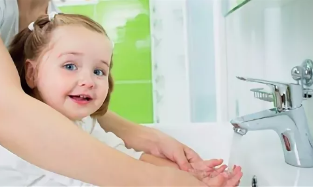
Diagnosis of helminthiasis
In most cases helminthiasis in children diagnosed due to the annual preventive medical examinations of the feces for worm eggs. However, this is not the most reliable method: in the presence of symptoms and negative analysis it must be remembered that not all types of worms can be defined in a similar way. The species that lay their eggs, also can avoid detection during the laboratory tests, as the frequency of breeding may not coincide with the time of the analysis. There are also cases in which the body has one or several people of the same sex individuals are not capable of reproduction, but harmful for the whole life cycle.
Negative fecal tests are recommended to carry out the re-survey in 2-3 weeks. In the list of prevention studies included the analysis of the presence of helminth eggs and scraping on enterobiasis. To suspect the presence of worms can also according to the results of the blood tests: high levels of eosinophils in combination with a reduction of haemoglobin in the majority of cases means the presence of parasites in the body.
For the diagnosis can be applied to biological studies of sputum, bile, urine, coprogram stool.
To clarify the diagnosis in cases of suspected Echinococcus examine the organs of the peritoneum ultrasonic and/or radiographic method. Opisthorchiasis is diagnosed through analyses of gut contents and sounding duodenal.
Specify the type of the parasite and has caused a damage to the body help studies immunological. After an accurate diagnosis is the chosen method of therapy.
Medicamentous methods for the treatment of helminthiasis in children
Therapy of helminthiasis is based on two directions: get rid of parasites and detoxification of the body, the reduction or leveling of damage to existing worms.
To reduce the severity of the signs of poisoning are appointed by the vitamin preparations (b, C), iron, vitamins, minerals complex, the glucose, the rate of infusion gemodeza, etc. In some cases, shows the use of diuretics, antihistamines. With the defeat of the heart muscle, the liver tissue can be applied hormonal agents.
As therapy of maintenance administered chelators, deducing from the blood the waste products of the parasites, the enzymes that help improve digestion and the functioning of the organs, etc.
When all helminth infections is not very recommend the use of a wide spectrum of preparations in children. Drugs, causing the death of the parasites affect the human body, so that the selection of the drug and its dosage must be approached with caution.
Homemade and traditional methods of getting rid of maggots is strictly not recommended due to lack of evidence and the ability to accurately measure the dose and the likely impact on the child's body.
Principles of the therapy of helminthiasis
In the majority of cases, in the treatment of helminthiasis have a family member to treatment should be available to all, who live in the area for adults and children. This applies not only very contagious askaridoza, but also to other types of helminthiasis. Medicines for every member of the family also selected by the doctor depending on the age and state of health.
If you have pets, which are mandatory to perform anthelmintic treatment regardless of time after the prevention.
In the room where the sick child, have to make a daily hygiene cleaning, preferably at the time of treatment to remove all the carpets, soft toys, blankets. Bedding and underwear, personal towels to be changed as often as possible (pants – twice a day), after washing all the bed linen must be carefully iron.
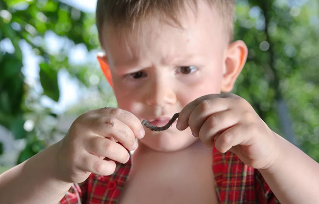
It is necessary to monitor the compliance with the rules of hygiene: wash hands after each visit to the toilet, returning in from the street, use only personal towels, short shaved nails. Without the fulfillment of the rules of therapy can be ineffective due to the constant presence of sources of infection in the environment of the patient.
Prevention of infection with worms
The preventive measures primarily include the rules of personal hygiene. The majority of the worm eggs are transferred to the mouth with the hands, and washing your hands helps prevent the majority of cases.
Other preventive measures also include:
- a deep (at least 2-3 minutes under the running water) to wash fruits, vegetables and leafy greens before eating, if you're going to eat raw;
- a long cooking river fish (40-60 minutes) before eating;
- timely prophylactic anthelmintic therapy in domestic animals;
- General cleaning of the house, in accordance with sanitary-hygiene norms.



































